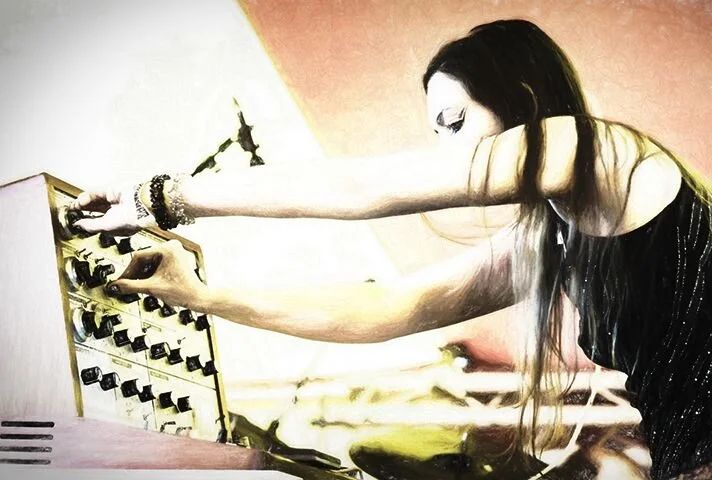What Equipment Do You Need To Start A Home Studio? (Pt.1)
Because I’m old, I can remember the time when a ‘home studio’ was the ultimate luxury only enjoyed by the most successful musicians. Technology races on though, and thankfully those days are gone. Now that literally anyone with a computer is able to put tracks together at home the choice of equipment that you can pair up with that computer is daunting. But what do you actually need? Well, that depends. In part one of this two-parter we’re going to look at what you need if you’re not wanting to record external instruments and voices, but are just planning on composing, editing and mixing.
Composing, editing and mixing
If this is everything that you want to do then you don’t actually need recording equipment as you can do it all in your computer (‘in the box’). What you need is software, and the ability to hear what you are doing.
Step one is your primary piece of software – the Digital Audio Workstation (DAW). There are many great options to choose from – Avid’s ProTools, Apple’s Logic, Cockos’ Reaper, Abelton’s Live and so on, and they are all fantastic. There’s way too much debate about which is ‘best’ – every last one of them will enable you to make amazing sounding tracks, so unless you collaborate a lot with someone else (in which case using the same DAW makes life easier) the choice is which you find the most comfortable to use. They pretty much all have a free trial, so you can simply run the trials and decide which one has a workflow that is the most intuitive to you. Then you’re done – pick that one and move on. I see too many people jump endlessly between DAWs like that’s what’s holding their career back. That’s definitely not it – I promise you.
While we are talking about software, there are lots of freebies that normally come bundled with your DAW - EQ, compressors, reverbs, delays and synths. These are generally well made and sound good, so stick with these for now and learn them. The main component that will be lacking is probably the synths. Unless you’re very lucky the sounds that you are looking for in your project won’t be provided by the limited built-in choices, so you’ll need to start looking at third-party options. Again, the choices here are bewildering, so I’ll just recommend some that I use personally as I can confidently recommend them. If you’re looking for samples then check out the Splice and Loopcloud subscription services as you get so much choice for a small monthly fee that it’s unlikely that you’ll want for more. For orchestral instruments, Spitfire made great libraries at all sorts of price points. For more synth choices then look at Omnisphere – the production library composer’s favourite pretty much since it was released over a decade ago.
Monitoring
Now you’ve got your computer set-up with software you need to consider how to get this music you’ll be making out of the computer and into your ears. There will be a basic headphone output on your computer, and it will be bad. Yes, it will work, but the sound quality of these built-in options is invariably very poor, so you need an interface that converts the digital signal in your computer to an analogue signal that will give you some sort of clarity and detail. These are sometimes called DAC’s (digital to analogue convertors), AD/DA’s (these also convert analogue to digital for getting audio back into your computer) or more simply, audio interfaces. The range of features, quality and price is huge but, in this case, you are just looking for quality monitoring as you’re doing everything in your DAW so the good news is that you’re looking at the simpler and cheaper end of the range. Focusrite do some great little interfaces that are very popular and rightly so. UAD also have the Apollo range, which also enable you to run some of their best-in-class plug-ins. SSL have a contender in this range now too, and they are absolute legends in the world of studio gear, so should definitely be on your short-list. I actually use a box called a Chord Mojo (aimed more at hi-fi users primarily) when I’m travelling. It’s small, lets me plug in two pairs of headphones and sounds excellent.
Speaking of headphones – your next necessity is a set of speakers (often called monitors) and / or some headphones. This is a deep subject but fortunately I’ve written a separate blog post all about it, so take a look at that one when you’re ready.
Lastly, you’ll probably need some sort of controller keyboard to play the synths in your DAW. I’ve always had a lot of joy from the range that Akai have, but Native Instruments are also worth checking out as I know a lot of musicians that swear by them.
Boring, but critical (i.e. boss level stuff)
OK – those are all the fun things. Now I’m going to remind you of some very boring things that are vitally important to your studio life. These are the items that you actually use in your studio more than any other - your screen, your mouse and your chair. If you value your eyesight, living without RSI, and having a working spine respectively then you need to take these three things seriously. I’ll recommend Apple screens, track-ball mice (or even the on-their-side RSI mice) and Herman Miller Aeron chairs (second-hand bargains from office clearances are the places to buy these chairs). Seriously, don’t skimp on these items if you plan on spending any amount of time in your studio. They will enable you to stay in there for longer periods, and you will save fortune on opticians / painkillers / osteopaths.








